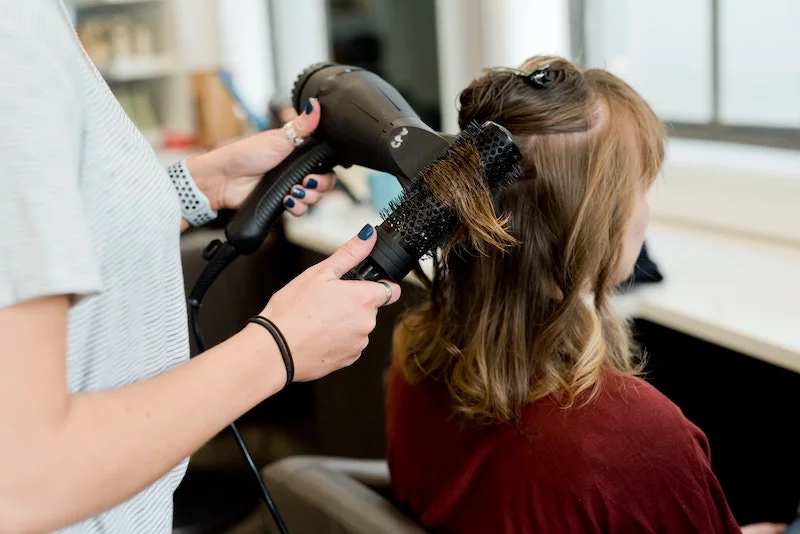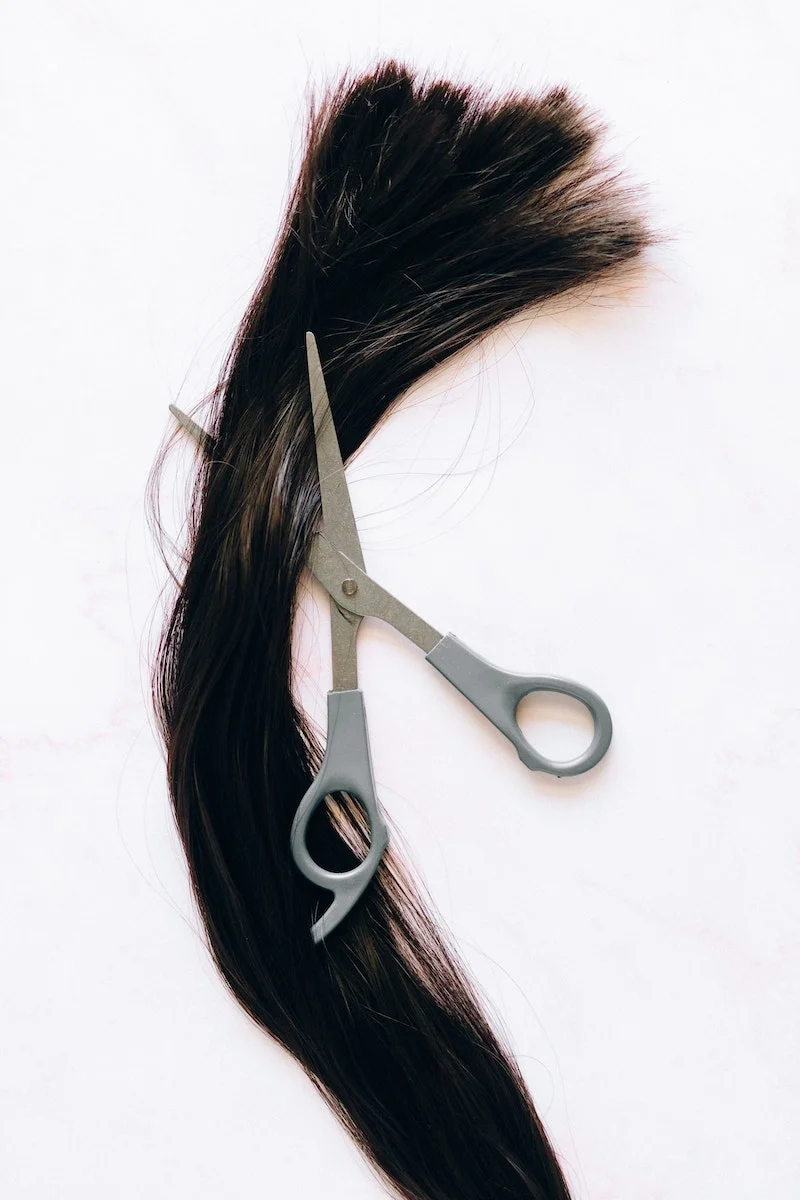Here’s How Often You *Really* Need to Get a Haircut (A Stylist Spills the Tea)
After spending years and years behind the chair, I can tell you the number one question I get isn’t about the latest balayage trend or a celebrity’s new ‘do. It’s much simpler, and everyone, I mean everyone, is worried about it: “Seriously, how often should I be cutting my hair?”
In this article
- First, Why Do Regular Trims Even Matter?
- Your 2-Minute Hair Health Audit (Do This Right Now!)
- A Practical Haircut Schedule for Your Style & Budget
- Let’s Talk Hair Type—It Matters. A Lot.
- How to Make Your Haircut Last Longer
- A Word on DIY Trims… and When to See a Pro
- How to Find a Stylist You Actually Trust
- Inspiration:
People ask this with a funny mix of hope and fear. They’re hoping I’ll give them a pass to wait another six months, but they’re secretly worried they’re already weeks overdue. And honestly? There’s no magic number. That whole six-week rule is a myth that doesn’t apply to most people.
The right schedule for you boils down to three key things: your hair’s texture, your current style, and what you want your hair to look like in the future. A haircut isn’t just about lopping off length; it’s the most important thing you can do for its health and shape. So, let’s ditch the old wives’ tales and figure out a schedule that actually works for you and your wallet.

First, Why Do Regular Trims Even Matter?
Before we talk schedules, you have to understand what we’re up against. Your hair is an amazing natural fiber, but here’s the kicker: it isn’t alive. Once it grows past your scalp, it can’t heal itself. Every brush, every pass with a flat iron, every sunny day… it all causes microscopic wear and tear.
Your hair has a protective outer layer, kind of like shingles on a roof. When hair is healthy, these shingles lie flat and smooth. But over time, friction and heat rough them up. This is where the trouble starts.
The Unstoppable Split End
When that protective layer gets damaged enough, the inner core starts to unravel. That’s a split end. And here’s the brutal truth: you cannot, under any circumstances, repair a split end. Serums and oils can glue it down temporarily to make it look better, but the damage is done. That split will travel up the hair shaft like a run in a pair of tights. A tiny split you ignore today can creep inches up the strand in a few months, making your hair look thin, weak, and see-through. This is why waiting too long for a trim is so counterproductive. You might come in trying to save length, but I’ll have to cut off three inches to fix damage that started as a tiny quarter-inch split.

So, regular trims aren’t about making your hair grow faster from the root—that happens at a steady half-inch per month, no matter what. Trims are about preventing the breakage that makes your hair get shorter from the bottom up.
Your 2-Minute Hair Health Audit (Do This Right Now!)
When you sit in my chair, I’m doing a full diagnostic. You can learn to spot these things, too. Take a minute and try this:
- The Slide Test: Pinch a small section of your hair between your thumb and forefinger. Slide them down from the middle to the end. Does it feel smooth the whole way? Or do you feel a distinct roughness or a crunchy, bumpy texture near the bottom? That’s the feeling of damaged, lifted cuticles crying out for a trim.
- The Wet Stretch Test: Next time you wash your hair, gently pull on a single wet strand. Healthy hair has some elasticity; it will stretch a bit and bounce back. Damaged, over-processed hair will either snap right away or stretch out and stay limp, like a wet noodle. That’s a sign its internal protein structure is compromised.
How did it go? What you feel tells you how urgently you need to manage those ends.

A Practical Haircut Schedule for Your Style & Budget
Okay, now for the good stuff. Think of these as professional starting points, not rigid rules. Adjust them based on how your hair looks and feels.
Super Short Hair (Pixies, Sharp Bobs, Fades)
Frequency: Every 3 to 5 weeks.
The Why: With these super-structured cuts, the shape is EVERYTHING. Just a half-inch of growth can completely throw off the lines, turning a chic, edgy bob into a flippy mess or a textured pixie into a shapeless helmet. The grow-out is fast and unforgiving.
Budget Reality: This is a high-maintenance relationship with your stylist. Let’s be real about the cost. A precision cut like this can run you $50-$80+. If you go every 4 weeks at $65, you’re looking at over $800 a year. It’s a commitment!
Medium-Length Hair (Lobs, Shoulder-Length Styles)
Frequency: Every 6 to 12 weeks.
The Why: This length is way more forgiving. A little growth won’t destroy the look, but you’ll notice it. Around the six-week mark, layers can start to feel heavy, and the biggest complaint I hear is, “My hair just won’t do anything anymore!” That’s your hair telling you its shape is gone.
Budget Reality: You have more flexibility here. A good cut might cost between $70 and $100. If you stretch it to every 12 weeks, your annual cost is around $280-$400, a much more manageable number for most.

Long Hair (Anything Below the Shoulders)
Frequency: Every 8 to 16 weeks (that’s about 2 to 4 months).
The Why: For long hair, it’s all about damage control. The ends of your hair are literally years old and have seen a lot of action. The goal is to snip off splits before they get out of control. A tiny half-inch trim every three months is way better than a massive three-inch chop once a year.
Pro Tip: Ask your stylist for a “dusting.” This is a technique where we meticulously snip just the very ends (like a quarter-inch) without touching your overall length. It takes time and precision, so don’t expect it to be cheaper than a regular cut, but it’s the secret to gaining real length over time.
Bangs and Fringes
Frequency: Every 2 to 4 weeks.
The Why: Bangs live on your face. A tiny bit of growth is the difference between chic and “I can’t see.” There’s no hiding it.
Good to know: Most decent salons get this and offer free or cheap bang trims between your full appointments. It takes five minutes! Just call and ask. It keeps you happy and looking sharp.

Let’s Talk Hair Type—It Matters. A Lot.
Your hair’s natural texture is just as important as the style. Let’s break it down.
- For Fine Hair (4 to 8 weeks): Fine hair gets wispy and see-through at the ends super fast. Regular, blunt trims are your best friend because they create the illusion of thickness and health. Over-texturizing is the enemy here.
- For Thick or Coarse Hair (8 to 12 weeks): This hair type is tough and can handle more time between cuts. The main challenge is bulk. After a couple of months, it can start to feel heavy and triangular. A good stylist can use internal layering techniques to remove weight so it’s easier for you to manage at home.
- For Curly and Coily Hair (12 to 20 weeks): This is a whole different ballgame. A half-inch of growth is often invisible due to shrinkage. The focus is on the overall shape and the health of the ends, which tend to be dry. My biggest piece of advice? Find a stylist who specializes in cutting curly hair dry, curl by curl. A traditional wet cut is a total gamble. To find a pro, try searching online for a “dry-cutting curl specialist” or a salon that uses curl-specific shaping methods in your area. It’s a game-changer.
- For Chemically Treated Hair (4 to 8 weeks): If you color, bleach, or relax your hair, you have to be more vigilant. These processes make your hair much more fragile. I call regular trims “insurance on your color investment.” You spend good money on that beautiful blonde, so you need to spend a little to snip off the damage before it breaks off on its own. For heavily bleached hair, 8 weeks is the absolute longest you should wait. No excuses!

How to Make Your Haircut Last Longer
Okay, so you just got a great cut. How do you keep it looking fresh for as long as possible? It’s all about what you do between visits.
First, turn down the heat. High temperatures are a major cause of cuticle damage. Second, sleep on a silk or satin pillowcase. It sounds extra, but it creates way less friction than cotton, meaning less frizz and breakage. Third, use a leave-in conditioner or hair oil on your ends daily to keep them hydrated and protected. These small habits make a huge difference in stretching your style from week 6 to week 10.
A Word on DIY Trims… and When to See a Pro
I get it. You’re tempted to save time and money with a little snip at home. If you’re just hunting down individual split ends, you might be okay. But please, hear me on this…

Did you know? Using kitchen or craft scissors on your hair is a disaster. Their blades are blunt on a microscopic level and they crush and shred the hair’s cuticle, which can cause a split end right where you cut. If you must trim at home, invest in a pair of proper hair shears for $20-$30 from a beauty supply store like Sally’s. They are razor-sharp and create a clean, healthy cut.
If You MUST Trim at Home (The “Search and Destroy” Method):
- Work on completely dry, clean hair.
- Take a small, one-inch section and twist it tightly from top to bottom.
- You’ll see little damaged ends sticking out from the twist. Carefully snip only those tiny stray hairs.
- Untwist and move on. Whatever you do, DO NOT try to cut a straight line across the bottom. I’ve spent countless hours fixing those kinds of mistakes!
And one last thing: a stylist is not a doctor. If you’re seeing sudden, excessive hair loss, bald patches, or have a painful, flaky scalp, it’s time to see a dermatologist or a trichologist (a hair and scalp specialist). These can be signs of underlying health issues that no haircut can fix.

How to Find a Stylist You Actually Trust
The perfect haircut schedule is something you build with a stylist who gets you. But how do you find that person? It’s like dating for your hair.
Start by booking a consultation, not a cut. Most are free or low-cost. This is your chance to interview them. Here’s a little cheat sheet of questions to ask:
- “I have [fine/thick/curly] hair. What’s your game plan for giving me a style that’s easy to manage?”
- “I’m worried about my hair looking [stringy/bulky/flat]. How do you add texture or remove weight without causing that?”
- “When I say I want one inch off, can you show me on your fingers exactly what ‘one inch’ means to you?” (This one is KEY!)
Listen to their answers. A great stylist will be excited to talk strategy with you. They’ll listen, offer honest feedback, and make you feel confident before a single strand is cut. That’s the partnership you’re looking for.

Inspiration:

Let’s be real: can any product actually










